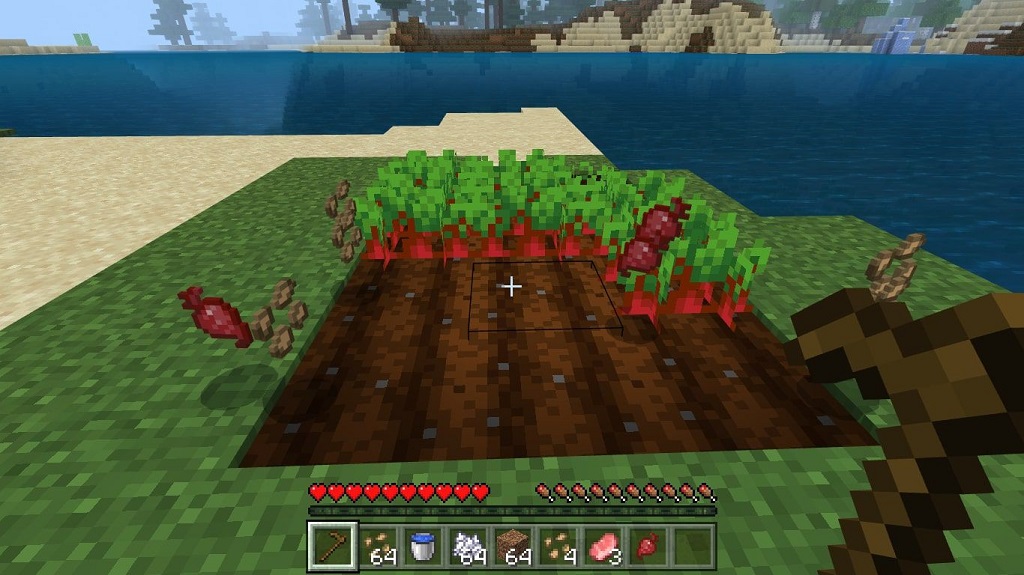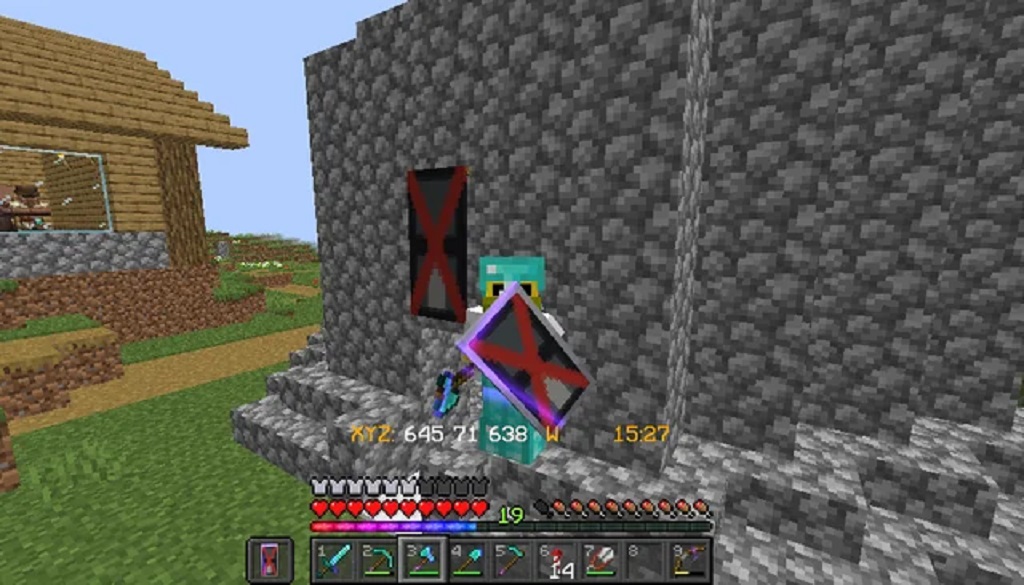To breed villagers in Minecraft, provide ample living space and beds.
The Importance Of Villager Breeding: Minecraft

Learn how to breed villagers in Minecraft to build a thriving community. Villager breeding is vital for creating a sustainable population and maintaining a vibrant village. Follow these simple steps to ensure your villagers multiply and thrive in the game.
Benefits Of Villager Breeding:Minecraft
Villager breeding is a vital aspect of Minecraft, a topic often explored in https://techconnectmagazine.com/ articles, that brings numerous advantages to players. Understanding the benefits of villager breeding can enhance your gameplay and make your Minecraft world more prosperous and thriving.
Let’s explore some of the key benefits you can enjoy through breeding villagers:
- Expand Your Village: Breeding villagers allows you to expand your village by increasing its population. As your village grows, you’ll have access to a wider range of services and resources from your villagers.
- Trading Opportunities: Villagers are a valuable source of trading in Minecraft. Breeding villagers can create more trading opportunities by increasing the number of available villagers with different professions and trades.
- Security and Defense: A larger population of villagers ensures better security and defense against hostile mobs. With more villagers, you can assign more iron golems to protect your village, making it safer for you and your valuable resources.
- Resource Generation: Villagers play an essential role in resource generation. By breeding the right types of villagers and assigning them specific professions, you can benefit from their ability to farm crops, mine resources, and create valuable items.
- Enchantments and Potions: Certain types of villagers, such as librarians or Clerics, offer enchantments and potions that can significantly enhance your abilities. Breeding villagers increases the chances of finding rare and valuable enchanted books and potions.
Types Of Villagers And Their Roles
In Minecraft, villagers come in different types and each type has a specific role. Understanding these roles can help you utilize villagers effectively and enhance your overall gameplay. The following are the main types of villagers you can find:
| Villager Type | Main Profession | Role |
| Farmers | Farming | Grow crops, collect produce, and breed animals. |
| Librarians | Librarian | Offer enchanted books, written books, and bookshelves for trading. Can also unlock cartographer trades. |
| Blacksmiths | Armorer, Toolsmith, Weaponsmith | Create and repair armor, tools, and weapons. Offer various metal-related items for trading. |
| Priests | Cleric | Trade various potions, enchanted items, and rare materials. |
| Nitwits | N/A | Unlike other villagers, nitwits do not have any specific profession or role. They cannot trade or perform any specific tasks. |
Knowing the types of villagers and their roles allows you to create a well-rounded village with villagers specialized in different professions. This variety enables you to maximize their potential and ensure your village is fully equipped to thrive and prosper.
Creating The Ideal Breeding Environment:Minecraft
Create an ideal breeding environment for villagers in Minecraft using these effective techniques. Improve your chances of successful breeding and expand your village with these simple and easy-to-follow steps.
Creating the Ideal Breeding Environment is crucial for successfully breeding villagers in Minecraft. Understanding Villager Mechanics and Optimizing Breeding Conditions, similar to learning how to make a fence in Minecraft, are essential factors that affect the success of your breeding efforts. Understanding Villager Mechanics involves recognizing that villagers have specific requirements that need to be met before they can breed.
These requirements include having enough available beds and a sufficient food supply. Beds are crucial for villagers to recognize their living spaces, so make sure you have enough beds for each villager in your breeding area. A bed is recognized as a viable living space if it is accessible and not already claimed by another villager. Optimizing Breeding Conditions: To ensure a successful breeding environment, follow these tips:
- Provide a Steady Food Supply: Villagers need to be well-fed to have the energy for breeding. Each breeding attempt requires a specific amount of food. Make sure to have a reliable source of food available near your breeding area. Carrots, potatoes, and bread are all viable food options for villagers.
- Separate Workstations: Villagers are more likely to breed if they have access to their dedicated workstations. Ensure that each villager has access to their job site block, such as a lectern for librarians or a smoker for butchers. This allows them to carry out their profession and increase their willingness to breed.
- Keep Villagers Happy: Villagers have a willingness to breed, which can be influenced by their happiness levels. Make sure your villagers have access to essential amenities like beds, and workstations, and protect them from threats such as zombies and other mobs.
In summary, creating an ideal breeding environment for villagers in Minecraft involves understanding their mechanics and optimizing breeding conditions such as providing enough beds, ensuring a steady food supply, separating workstations, and keeping the villagers happy. By following these guidelines, you can increase the chances of successful breeding and expand your Minecraft village.
Breeding Process Step By Step:Minecraft
Understanding the breeding process in Minecraft is essential for players looking to expand their village population. The step-by-step breeding process involves identifying suitable villagers, initiating breeding, and managing the process to ensure successful reproduction. In this guide, we’ll walk through each step in detail.
Identifying Suitable Villagers
In Minecraft, not all villagers are suitable for breeding. It’s important to identify suitable candidates that can participate in the breeding process. To do this, look for adult villagers who are willing to breed, as indicated by the presence of heart particles around them. Additionally, make sure there are unclaimed beds available for the new villagers. This will ensure a suitable environment for the breeding process.
Initiating Breeding And Managing The Process
Once suitable villagers have been identified, players can initiate the breeding process by ensuring there is an excess of food available nearby. Feeding villagers with a variety of food items such as bread, carrots, potatoes, and beetroots will encourage them to breed. Managing the process involves vigilantly monitoring the villagers, ensuring they have access to food, beds, and a safe environment. Over time, the new villagers will be born, expanding the population of the village.
Managing The Villager Population:Minecraft

In Minecraft, managing the villager population is crucial for sustaining a thriving community. By understanding how to utilize breeding to grow the population and dealing with challenges such as overpopulation and housing, you can ensure the success of your village. Let’s explore these topics in detail.
Utilizing Breeding To Grow The Population
One of the most effective ways to grow the villager population is by promoting breeding. Villagers can breed by themselves if certain conditions are met. Here’s a step-by-step guide on how to encourage breeding:
- Provide Sufficient Housing: Each villager requires a bed, so make sure there are enough beds available for all villagers. Having excess beds is essential for new villagers to have a suitable place to spawn.
- Offer a Food Source: Villagers need to have access to food to breed. You can throw food items such as bread, carrots, or potatoes at them, and they will pick them up. Make sure to have a surplus of food to keep the breeding process going.
- Maximize Villager Interaction: Villagers need to have a social environment for breeding. You can accomplish this by creating a central gathering place, like a market square or community area, where villagers can interact with each other.
- Monitor Villager Profession: Different villager professions have varying breeding requirements. Ensure that you have a good mix of professions to maximize the likelihood of successful breeding.
- Control the Light Levels: Villagers prefer well-lit areas for breeding. By providing adequate lighting, you can create a breeding-friendly environment.
Dealing With Overpopulation And Housing
While breeding is essential for the growth of your village, it can also lead to overpopulation if not managed properly. Here are some strategies to handle overpopulation and housing:
- Expand Your Village: If your village is constantly at maximum capacity, consider expanding the area and building additional houses. This will provide more space for villagers to live and breed.
- Trade with Villagers: Trading with villagers can help control the population by removing excess villagers. Offer items they desire in exchange for experience points, emeralds, or valuable resources.
- Implement a ‘One-for-One’ Policy: For every new villager born, remove one villager from the population. This policy ensures that the population remains stable and prevents overcrowding.
- Separate Villagers: Divide your villagers into smaller groups and assign them to different areas within the village. This will prevent them from overcrowding a single location and optimize their living conditions.
- Create Restricted Breeding Zones: Designate specific areas for breeding, allowing you to control the population growth. Villagers should only breed within these designated zones.
By effectively managing the villager population through breeding techniques and addressing challenges like overpopulation and housing, you can create a vibrant and sustainable village in Minecraft. Happy breeding!
Troubleshooting Common Breeding Issues
Learn how to address common breeding issues when breeding villagers in Minecraft. This resource provides troubleshooting tips for a successful village breeding process.
Addressing Breeding Failures
Breeding villagers in Minecraft can sometimes be a tricky process. If you’ve encountered any issues, don’t worry! We’re here to help you troubleshoot common breeding problems. So, let’s dive right in and address some of the most common breeding failures you may come across:
Overcoming Obstacles In The Breeding Process
- Insufficient Living Space: The first obstacle you may encounter is not having enough space for your villagers. Each villager requires a “house” to breed. Ensure there are enough doors and beds available for your villagers. One door and one bed per villager are necessary for successful breeding.
- Lack of Food: Villagers need to be well-fed to breed. Make sure you provide them with enough food, such as bread, carrots, potatoes, or beetroot. Stock up on these items and make them accessible to your villagers so they can share and consume them.
- Too Much Iron Golems: Having too many iron golems in your village can prevent villagers from breeding. Iron golems act as protectors, but if there are too many, the villagers may feel unsafe and halt their breeding activities. Consider removing any excess iron golems to encourage breeding.
- Villagers Are Already Employed: Villagers need to be “unemployed” to breed. If your villagers are already assigned to specific job blocks, such as lecterns or composters, they won’t be available for breeding. Ensure there are enough unemployed villagers in your village for successful breeding.
- Insufficient Trade Offers: Villagers require a steady supply of available trades to breed successfully. If you’ve already exhausted all your villagers’ trade offers, they won’t have the incentive to breed. Keep refreshing the trades by trading with them or adding more villagers to your village.
- Low Village Reputation: Villagers need a certain level of reputation to breed. This can be influenced by various factors, such as curing zombie villagers or protecting the village from raids. Ensure that your village has a high enough reputation to encourage successful breeding.
- Insufficient Lighting: Darkness can hinder the breeding process. Make sure your village is well-lit and free from any dark areas. Use torches or other light sources to eliminate any potential breeding obstacles caused by low light levels. Remember, troubleshooting breeding issues may require trial and error. Be patient and persistent in your attempts to resolve any problems. With these steps and some perseverance, you’ll soon have a thriving village filled with adorable baby villagers!
Frequently Asked Questions For How To Breed Villagers In Minecraft
How Do You Breed Villagers In Minecraft?
To breed villagers in Minecraft, you need to create living spaces and provide them with beds. Ensure that there are enough beds for both existing and new villagers. You can also use food such as bread, carrots, or potatoes to encourage breeding by throwing it to the villagers.
Conclusion
Breeding villagers in Minecraft is a valuable skill for creating a thriving community. Players can establish a prosperous village by understanding the process and providing proper care. Breeding villagers opens up numerous gameplay opportunities and allows for developing a diverse and lively world. Additionally, players can enhance their Minecraft experience by learning how to dye leather armor, adding a personalized touch to their characters and further immersing themselves in the vibrant in-game universe. Mastering this game aspect adds depth and excitement to the Minecraft experience.



